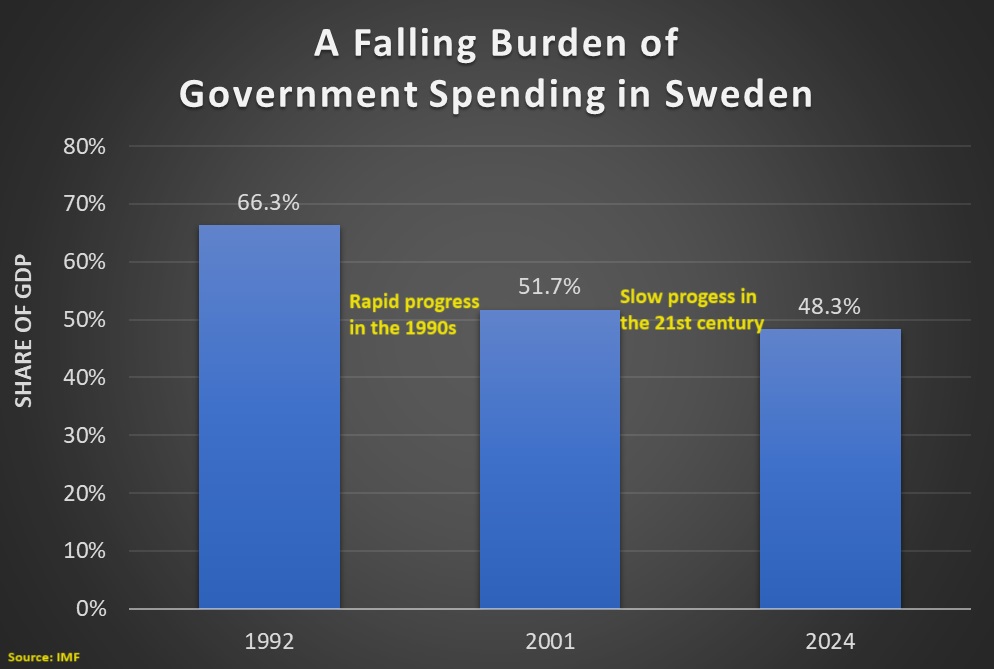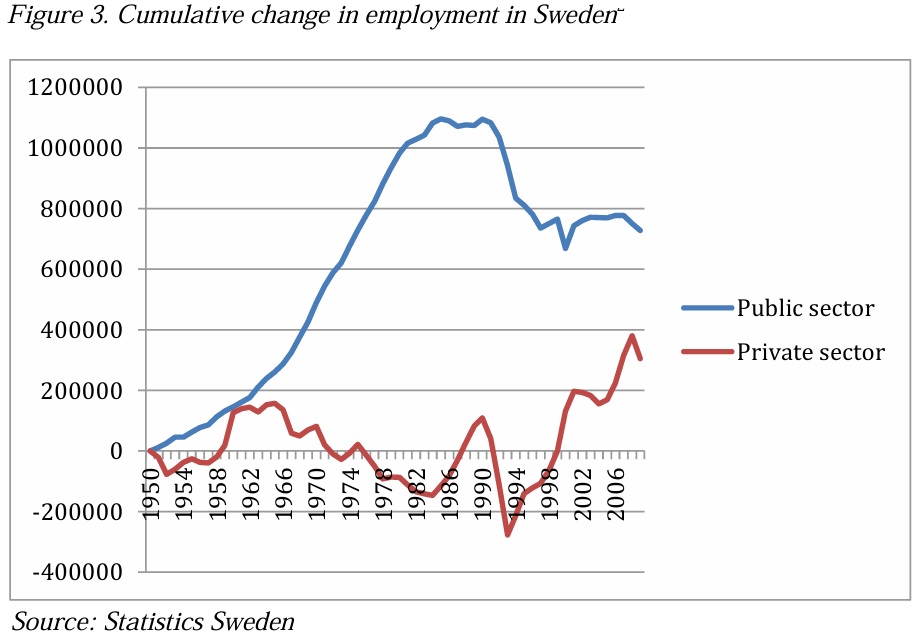Since this is my last full day in Sweden, I want to build upon my previous two columns (on long-run tax policy and pandemic spending policy).
We’ll start with this video explaining that Sweden is not socialist.
Johan Norberg is correct. Sweden does not have genuine socialism, which involves government ownership, central planning, and price controls.
The best way to describe Sweden is that it is a free market economy with bad fiscal policy.
But it used to have good fiscal policy. Very small government and no welfare state.
Unfortunately, policy veered in the wrong direction, especially starting in the 1960s.
But things have gotten better in recent decades. Ten years ago, I wrote about a very impressive period of spending restraint in the 1990s. That was worthy of praise, but what’s noteworthy is there has been no backsliding.
Indeed, IMF data shows that Sweden has continued to make progress, albeit at a slow pace.
It goes without saying (but I’ll say it anyhow) that the burden of government spending is still far too high. But a government that consumes 48 percent of GDP is better than one that consumes 52 percent of GDP.
And 52 percent of GDP is far better than 66 percent of GDP.
Moreover, Sweden has partially privatized its Social Security system, so it’s long-run fiscal problems are not severe – at least not compared to the United States.
But Sweden has made progress is areas other than fiscal policy. Here are some excerpts from a 2014 report by Stefan Fölster and Johan Kreicbergs of the Reform Institute.
The seventies and eighties saw Sweden’s tax burden rise from an average European level to the world’s highest. The public sector expanded vastly. All facets of the welfare system were made more generous… Meanwhile, labour market regulation increased… Throughout these years, Swedes’ individual after-tax real income stagnated, private sector job creation ceased, and public debt spiralled higher.
This culminated in a severe economic crisis in the early 1990s. …many Swedes began to react to the country’s lacklustre economic performance… At first, a few public utilities and the financial markets were opened to competition, and an important tax reform was implemented. …emphasis at the time was placed on reforms that opened significant sectors in the economy to greater competition. …significant changes were introduced to the tax system, macroeconomic policy framework, and social insurance system. …
The results of this wave of reforms are remarkable. During the twenty years before 1995, GDP and productivity growth was substantially lower than in other countries. Virtually no net jobs were created in the private sector and government debt increased rapidly. Moreover, disposable income of Swedish households grew only in a very slowly. Since 1995, every aspect of the Swedish economy has changed. GDP and productivity growth have been higher than in comparable countries. Employment in the private sector has grown by more than 1% annually, while public sector employment has decreased.
Public finances are now stronger than in most countries. Furthermore, median disposable income of Swedish households has grown 4 times faster after 1995, compared to the previous 20 years.
Here’s my favorite chart from the report.
It shows how the numbers of bureaucrats skyrocketed in the 1960s and 1970s, while jobs in the economy’s productive sector languished.
As a result of reforms, however, the number of bureaucrats has decline and jobs in the private sector have increased.
The net effect of all the reforms – lower tax rates, reduced spending burden, deregulation, etc – has been very positive.
Sweden was losing ground during the era of expanding government and now it is once again gaining ground.
Let’s close with an amusing look at how Sweden’s reforms are making it difficult for the left to cite Sweden as a role model.
That’s not good news for Bernie Sanders.
The bottom line is that Sweden is not Singapore. It’s not Switzerland, either.
But it’s better than people think. And its economic history shows that bad policy lowers living standards and that good reforms improve living standards.
P.S. Sweden also has nationwide school choice.



No comments:
Post a Comment